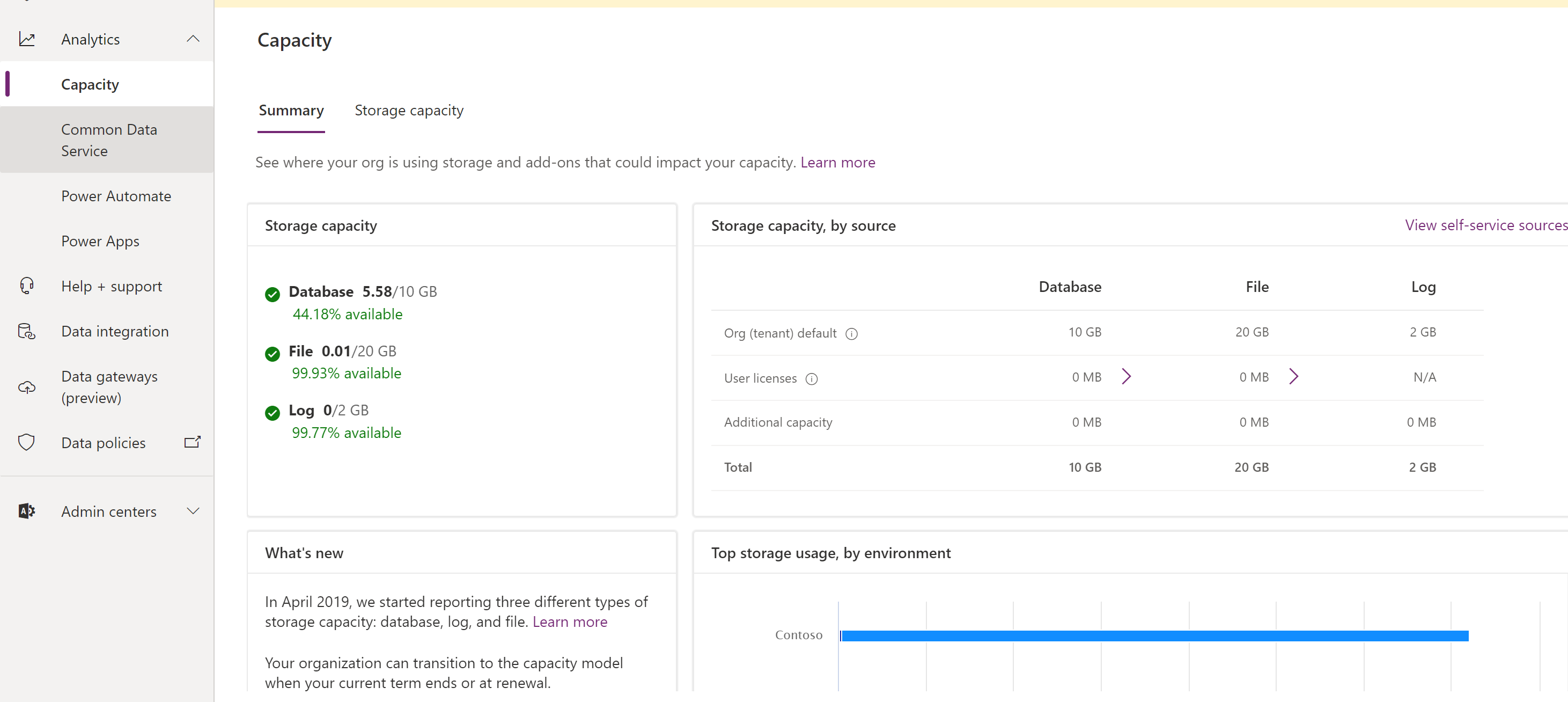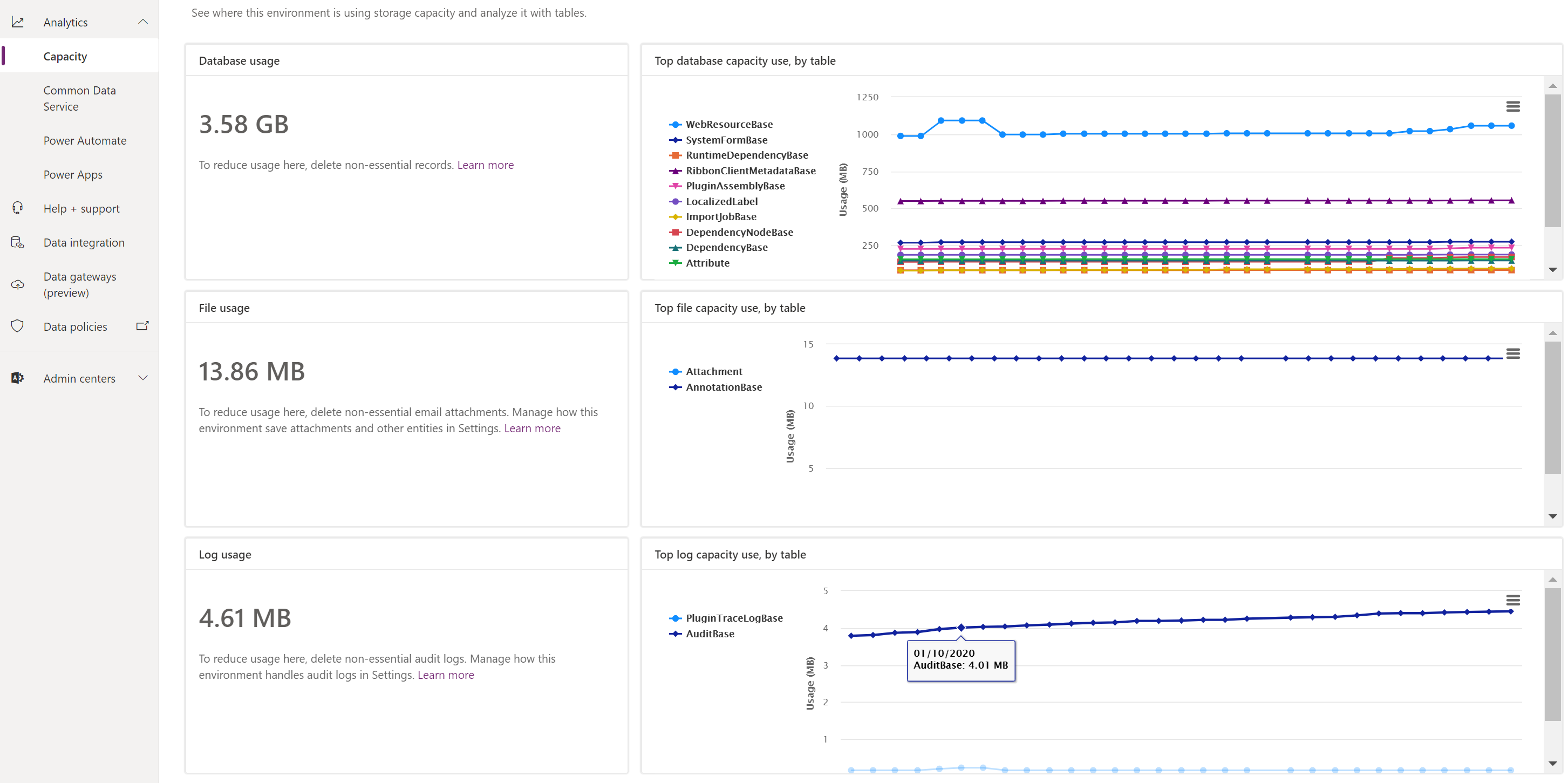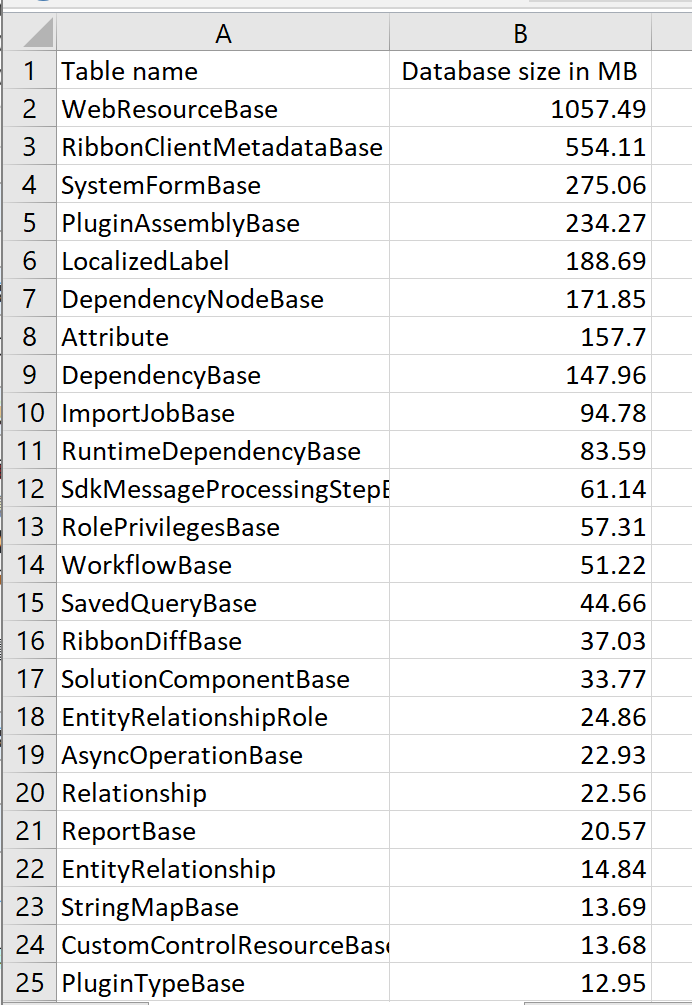我是微软Dynamics 365 & Power Platform方面的工程师罗勇,也是2015年7月到2018年6月连续三年Dynamics CRM/Business Solutions方面的微软最有价值专家(Microsoft MVP),欢迎关注我的微信公众号 MSFTDynamics365erLuoYong ,回复391或者20200204可方便获取本文,同时可以在第一间得到我发布的最新博文信息,follow me!
根据官方文档 Microsoft Dynamics 365 Licensing Guide (我查看的是2020年2月份版本),购买Dynamics 365 Customer Engagement后,所在的租户(Tenant)默认的容量(capacity)如下:

每个Enterprise Base licenses (Sales Enterprise, Customer Service Enterprise, Field Service, and Project Service Automation) 将会免费增加250兆Database Capacity,2GB的File Capacity,不会增加Log Capacity,如下表:

为了更好的理解举个例子,假设你购买了10个Enterprise Base licenses,那么该租户总共获得的免费的Database Capacity是 10GB+10*250MB, File Capacity是 20GB + 10*2GB,Log Capacity保持不变还是2GB。

那你可能会问,怎么定义 Database,File 和Log,参考官方的说明 Common Data Service storage capacity 如下:
- File: The following entities are used:
- Attachment
- AnnotationBase
- Any custom or out-of-box (OOB) entity that has fields of datatype File or Image (full size)
- Log: The following entities are used:
- AuditBase
- PlugInTraceLogBase
- Database: All other entities are counted for your database
那我如何查看自己的Capacity和使用情况呢?请使用有权限的账号(如果可以用具有Global Admin角色的账户)登录 https://admin.powerplatform.microsoft.com/ ,导航到Analytics下面的Capacity,展示效果类似下图,可以看到我这里是绿灯,大部分都没有使用。

点击上面页面的 Storage capacity标签,可以看到不同的实例使用的存储情况,类似下图:

再点击Environment name旁边的 图标,可以看到更多的情况,就是三个种类按照实体展示占用量比较多的图形。
图标,可以看到更多的情况,就是三个种类按照实体展示占用量比较多的图形。

点击旁边的按钮可以看到更多的下拉菜单,比如可以全屏幕展示,可以下载该图形展示为PNG格式,下载数据为CSV格式。

下载数据为CSV格式我打开后截图如下:

你可能会问,如果我接近使用完了怎么办?官方文档 Free storage space 提供了 9种方法并有详细说明,我这里就不赘述了。
用完了可以买吗?当然,这个问题充值可以解决,Dynamics 365 Capacity Add-ons 章节有介绍,如下,可以知道要买的话是1G的整数倍,不能一次买100兆空间。

从上表可以看到,Database Capacity有个最大限制,默认情况下是 4TB。我的理解这个4TB包括了存储在Dynamics 365 Customer Engagement实例中的所有数据,包括Database,File 和Log的和。当然,如果超过4TB也可以开Case来扩容,不过在扩容期间会有短暂的服务中断。
还有人会问,我可以通过编程的方式拿到Capacity相关的数据吗?根据官方文档:PowerShell cmdlets for Power Automate admins are generally available 的说明是可以的,不过预计要到2020年4月份才公开可用。
We are now announcing the General availability of these cmdlets, as well as the addition of new cmdlets around:
- Capacity management
- Permission and user management
- Environment lifecycle management
前面提到了租户,实例等概念,这些概念的官方解释请参考: About multiple online instances or tenants ,我复制出来如下:
| Term | Definition |
|---|---|
| Tenant | For model-driven apps in Dynamics 365, a tenant is the account you create in the Microsoft Online Services environment when you sign up for a subscription. A tenant contains uniquely identified domains, users, security groups, and subscriptions and can contain multiple instances. The tenant created for you has a domain name of <account>.onmicrosoft.com. For example, contoso.onmicrosoft.com. |
| Instance | When you sign up for a trial or purchase a subscription, a Production instance is created. Each additional Production or non-Production (Sandbox) instance you add creates a separate and isolated organization on the same tenant. An instance has the URL format: https://<URL name>.crm.dynamics.com. For example, https://contososales.crm.dynamics.com. |
| Multiregional instance | An instance in a different region than where your tenant resides. Local instances can provide quicker data access for users in that region. More information: Add and edit multiregional instances |
| Organization | In Dynamics 365 products and content, an organization is an entity (such as a business or company) that uses Microsoft products, technologies, or services. |
| Subscription | A subscription consists of the licenses and add-ons included with the trial or paid service you signed up for in your account. Subscriptions can vary in license type, price, and end date. For example, a subscription might be 100 licenses of Dynamics 365 Professional and 10 licenses of Dynamics 365 Enterprise. |
| Identity | The user account used to sign in to model-driven apps in Dynamics 365. You can also use this identity to access other Microsoft Online services, such as Office 365 or SharePoint Online. Administrators can decide if they want to federate user identity management between model-driven apps in Dynamics 365 and on-premises Active Directory. |
| User account | A user account assigned by an organization (work, school, non-profit) to one of their constituents (an employee, student, customer) that provides sign-in access to one or more of the organization’s Microsoft cloud service subscriptions, such as Exchange Online or model-driven apps in Dynamics 365. Access to an online service is controlled by the license assigned to the user account. User accounts are stored in an organization’s cloud directory within Azure Active Directory, and are typically deleted when the user leaves the organization. Organizational accounts differ from Microsoft accounts in that they are created and managed by admins in the organization, not by the user. |
| Security group | If your company has multiple instances, you can use instance security groups to control which licensed users can access a particular instance. More information: Control user access to instances: security groups and licenses |